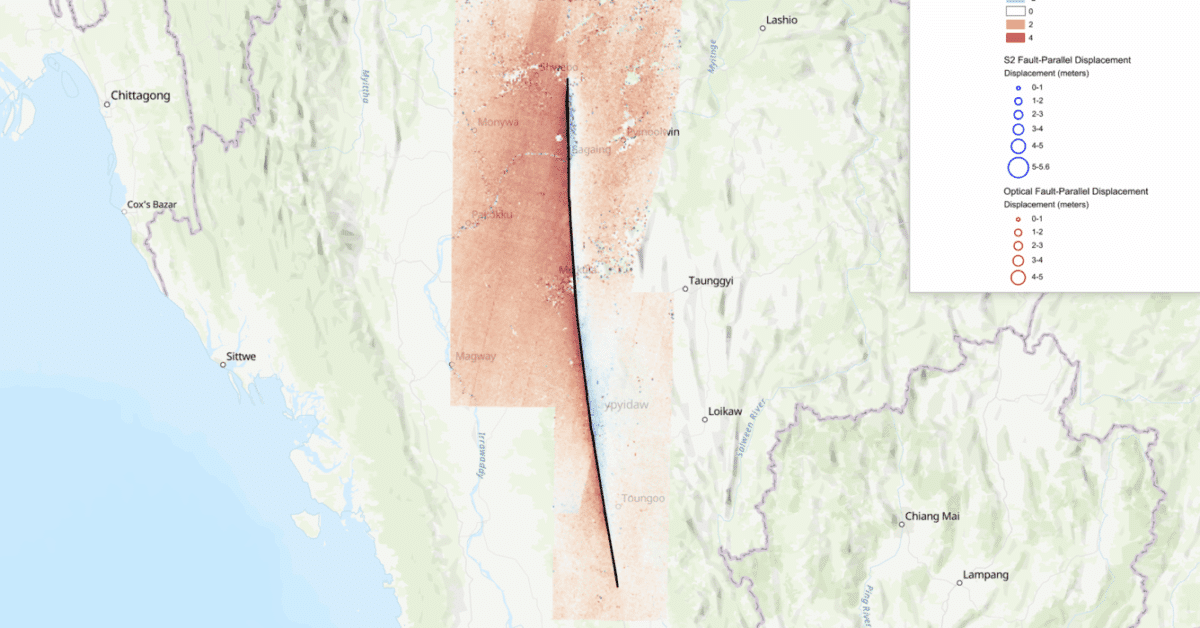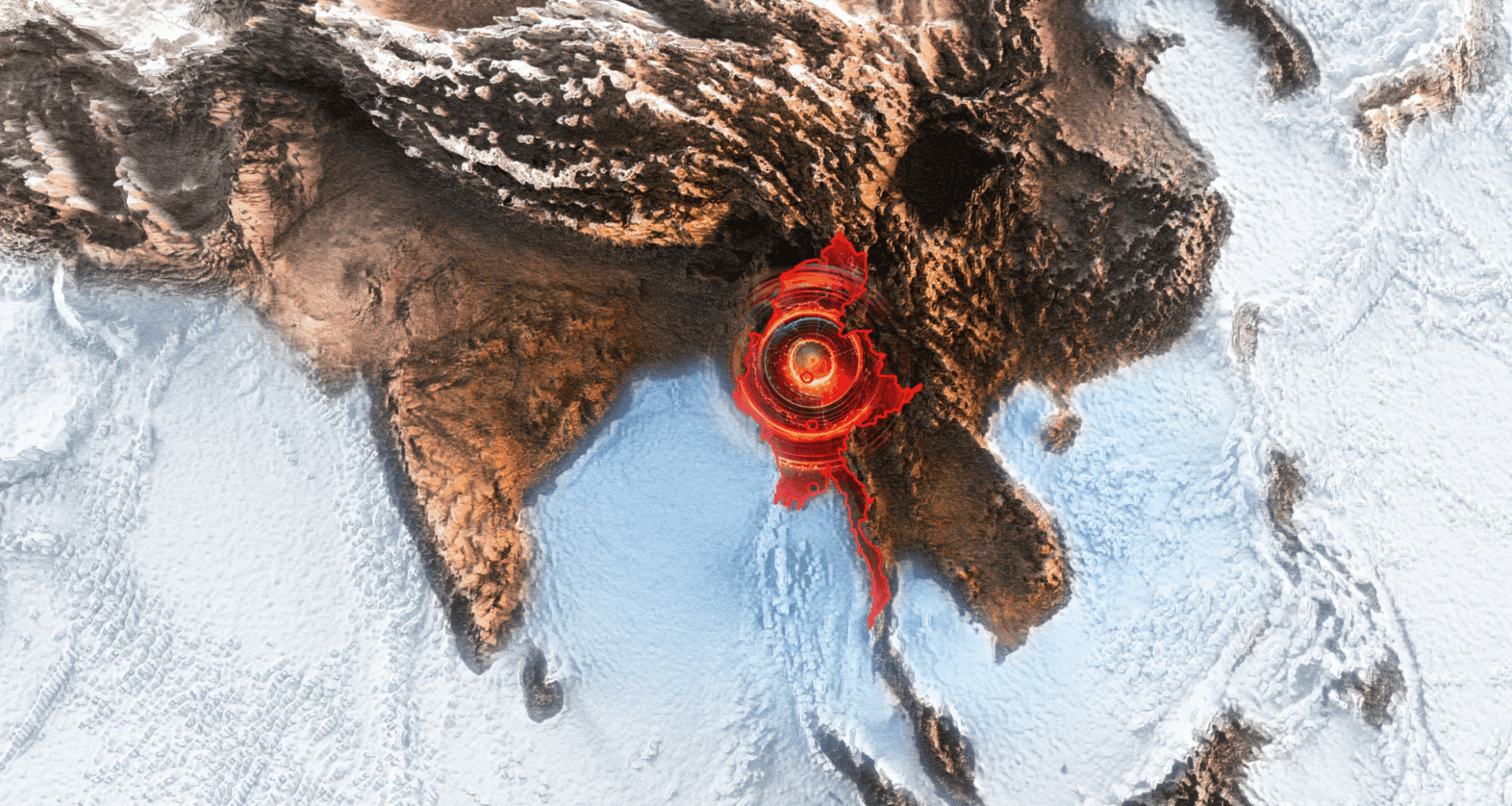On March 28, 2025, Myanmar was struck by a powerful 7.7 magnitude earthquake that defied expectations and left a lasting mark on seismology. What made this earthquake unique was its speed and scale, moving faster than typical seismic waves and causing extensive damage across the country. A recent study sheds light on this extraordinary event, revealing how a rare combination of factors contributed to one of the fastest and longest ruptures ever recorded. This research, published in the journal Science, offers critical insights into how earthquakes behave on large fault lines.
The Science Behind Supershear Earthquakes
Earthquakes typically involve a rupture in the Earth’s crust, where the fault line slips and releases stored energy. But in the case of the March 2025 Myanmar quake, the rupture surpassed normal expectations by moving faster than the seismic waves it generated. Known as a supershear earthquake, this event saw the fault rupture traveling at speeds over three miles per second—an unprecedented velocity in continental earthquake history.
This rare phenomenon was captured using a combination of global seismic records and satellite measurements, which allowed scientists to track the rupture’s movement second by second. The research team, led by Dara E. Goldberg of the U.S. Geological Survey (USGS), found that this rupture extended approximately 475 kilometers along the Sagaing Fault—more than double what standard magnitude scaling would predict. As Goldberg noted, “supershear earthquakes are like breaking the sound barrier, but in rock,” an apt comparison that highlights the immense speed and energy involved in such events.
The rupture caused intense shaking in parts of Myanmar and nearby regions, with some areas experiencing violent shaking that cracked walls and warped infrastructure. The speed of the rupture and the way it interacted with the surrounding environment amplified the earthquake’s impact in ways not typically seen in other seismic events.
Published in the journal Science, this research unveils how the combination of a straight fault line, long-stored stress, and differing rock properties helped this rupture travel so quickly. The findings reveal not only the mechanics of the quake but also provide valuable insights for future earthquake preparedness.

Factors That Fueled the Fastest Earthquake Ever Recorded
The Myanmar earthquake was not just fast, it was a product of three critical factors that, when combined, allowed for an unprecedented rupture. First, the geometry of the Sagaing Fault played a significant role. The southern segment of the fault remained nearly straight for hundreds of kilometers, allowing the rupture to travel without the hindrance of sharp bends, which often slow the process in other earthquakes.
Second, the stress buildup on the fault since the last major earthquake in the region, which occurred in 1839, had been accumulating over nearly two centuries. This slow accumulation of strain allowed a significant amount of energy to be stored, which could only be released in a massive event. The long dormancy period created the ideal conditions for a powerful rupture that broke through the Earth’s crust with exceptional speed.
Lastly, the contrasting properties of the rocks on either side of the fault were crucial in sustaining the rupture. Differing levels of stiffness and strength across the fault line meant that seismic energy behaved in an unexpected way. As the rupture propagated, the energy reflected and refracted differently, helping the rupture maintain its momentum. This “feedback loop” allowed the quake to accelerate, maintaining its supershear speed along a large portion of the fault.
Supershear Earthquakes: A New Threat?
Supershear earthquakes, like the one in Myanmar, are extremely rare but incredibly potent. For engineers and urban planners, this phenomenon poses a unique challenge. Traditional seismic hazard models typically rely on a close relationship between earthquake magnitude and rupture length. However, the Myanmar earthquake demonstrated that even a moderate-magnitude earthquake could produce an unusually long rupture, thus increasing the shaking intensity at distances much farther than previously expected.
The intensity of shaking during a supershear earthquake can be dramatically different from that of a typical earthquake. In areas where the rupture traveled fastest, surface waves intensified, causing much more severe damage than what would have been predicted by standard models. This variability in shaking means that regions farther from the fault might experience stronger shaking than those located closer, which could be a critical factor in disaster preparedness.
Lingsen Meng, a professor at UCLA, emphasized the seriousness of this issue, stating,
“Supershear earthquakes create seismic shock fronts that can double the intensity of shaking, even hundreds of kilometers away.”
This poses significant implications for how we assess earthquake risk, particularly in populated regions along active fault lines.

